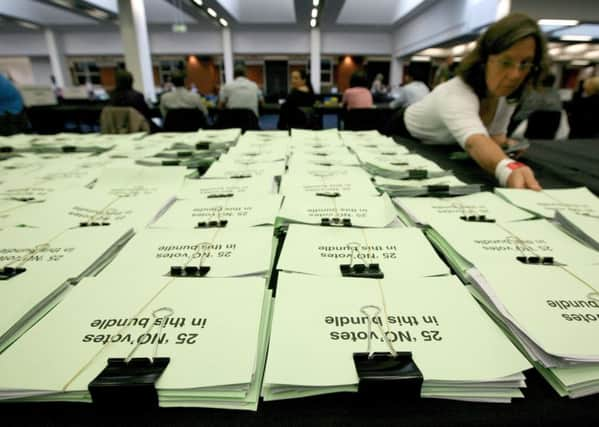Ben Lowry: The first-past-the-post electoral system is producing massively unjust outcomes and needs urgent reform


George II addressed MPs and peers, and they in return sent messages of fawning loyalty to him.
On Friday (see link below) we reprinted how members of the House of Lords spoke on that occasion, on Monday we will reprint the Commons
Advertisement
Hide AdAdvertisement
Hide AdMuch has changed since then. Catholics did not get the vote for another half century, and women not for almost another two.
In the 1730s only a fraction of men had a vote, and even those who did often lived in boroughs which had so many electors that their vote barely counted, while others lived in ‘rotten boroughs’ where the tiny number of electors ensured disproportionate influence for each vote.
But the shape of the current parliamentary system was already in place in the 1730s. There were general elections every few years, and the House of Commons had primacy over the Lords, something it had not had a century earlier until Cromwell shook things up.
One thing has not changed over those centuries, however — the first-past-the-post (FPTP) principle, in which the person who gets the most votes represents the constituency at Westminster.
Advertisement
Hide AdAdvertisement
Hide AdThis applied in 18th century elections in which one candidate beat another 212 votes to 109, or a 21st century one, in which four candidates all get 10,000+ votes, one of whom shades the others to victory (Alasdair McDonnell won South Belfast for the SDLP in 2014 with a mere 24% of the vote).
FPTP suits a system in which two political parties are dominant. Generally the ultimate make-up of the House of Commons reflects the way the country has voted overall.
In America, where the Democratic and Republican parties still dominate, FPTP works OK.
But for decades in the UK it has led to unrepresentative outcomes.
Advertisement
Hide AdAdvertisement
Hide AdLabour and the Conservatives do fine, because there are many places where they poll very well and other areas where they poll very badly. They are almost always guaranteed 200 or so of the 651 Commons seats.
But parties that poll consistently everywhere, but neither well nor badly anywhere, struggle.
This has long been a problem for Liberals, who often got 15% or 20% of the vote but 3% or 4% of the seats.
The problem has been worsening so that the electoral system is now throwing up massively unjust results. Ukip and the Greens got a combined 17% share in 2015, five million votes, but only a seat each.
Advertisement
Hide AdAdvertisement
Hide AdIn 2017, the Lib Dems got 2.4 million votes, almost ten times the DUP’s 292,000 votes, but only slightly more seats, 12 to 10.
You might think these points are obvious. Yet it cannot be that obvious because eight years ago, in 2011, the UK thumpingly rejected reform in a referendum on bringing in a mild form of proportional representation (PR) in general elections.
I am one of the few people on the political right who supported the Additional Vote (AV) system. There is not enough room in this article to recap on the points we supporters of reform made in 2011, but suffice to say AV, while imperfect, ironed out the worst of the injustices.
It also kept the ‘single member’ seat, in which one MP represents one area, like West Belfast or North Antrim. In a true PR system you need multi member constituencies, so that, say, Co Down becomes a single vast seat with four MPs.
Advertisement
Hide AdAdvertisement
Hide AdThe intimate link between representative and constituency is lost.
Supporters of parties that do well out of FPTP, such as the DUP, tend to support the status quo. But it can work for a party for decades, then destroy it, as it did the Ulster Unionists. For 50+ years they had 10+ MPs until FPTP wiped them out and shut them out of Westminster.
PR can lead to permanent coalitions, as mainland Europe shows, but FPTP can cause us to lurch between governments of firm left and right (Labour 1970s, then Thatcher). If we go too far one way, the public corrects the other.
Now, in these perilous electoral times which have seen phenomenons such as Trump and Macron sweep aside the established order, we risk disastrous outcomes.
Advertisement
Hide AdAdvertisement
Hide AdIf you are a Corbyn fan or a Brexit purist, you might welcome the prospect of a general election in which the movement that you support sweeps the board.
But it will ultimately be hugely damaging for parliamentary democracy if we do not get election outcomes that broadly reflect the varying ways that people express themselves at the ballot box.
• Ben Lowry (@BenLowry2) is News Letter deputy editor